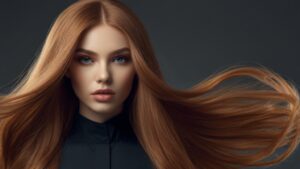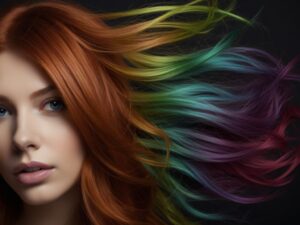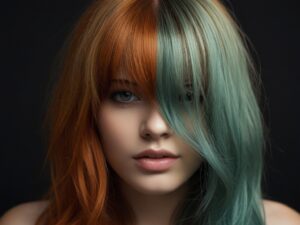Hair coloring is an ancient art form, a vibrant tapestry woven throughout human history. From the earliest attempts to alter natural hues to the sophisticated techniques of today, our fascination with colored hair reflects our desire for self-expression and transformation. Let’s embark on a journey through the hair color chronicles, exploring the fascinating evolution of this enduring practice.
Early Encounters: Natural Dyes and Cultural Significance
The earliest evidence of hair coloring dates back to ancient civilizations. In Mesopotamia and Egypt around 3500 BC, people used natural dyes derived from henna, plants, and minerals to darken, highlight, or completely change their hair color. Hair color held cultural significance; Egyptians associated dark hair with youth and divinity, while blonde hair was favored by royalty.
Roman and Greek Innovations: Experimentation and Status Symbols
The Romans and Greeks embraced hair coloring with enthusiasm. They experimented with plant extracts, lye, and even metallic salts to achieve various shades of blonde, black, and red. For these civilizations, hair color served as a status symbol, with golden blondes being particularly coveted by the wealthy elite.
The Middle Ages: A Shift in Perception and Religious Restrictions
During the Middle Ages, hair coloring practices faced scrutiny from the Church. Vibrant hair colors were often associated with witchcraft and heresy, leading to a decline in the use of dyes. However, natural dyes like henna remained popular for more subtle hair darkening and reddish hues.
The Renaissance: A Return to Vibrancy and Experimentation
The Renaissance witnessed a renewed interest in hair coloring. Venetian women, renowned for their beauty, used saffron, lead combs, and urine washes to achieve a coveted shade of blonde. Men also embraced hair coloring, with dyes derived from walnut husks and leeches used to darken hair and create a more youthful appearance.
The 19th and Early 20th Centuries: Scientific Advancements and the Birth of Modern Hair Dye
The 19th century marked a turning point in hair coloring history. The discovery of synthetic dyes in the mid-1800s revolutionized the practice. However, these early dyes were often harsh and damaging to hair. In 1907, Eugène Schueller, the founder of L’Oréal, created the first commercially available safe hair dye, ushering in the era of modern hair coloring.
The 20th and 21st Centuries: A Kaleidoscope of Colors and Technological Advancements
The 20th and 21st centuries witnessed an explosion of vibrant colors and innovative hair coloring techniques. From the iconic blonde bombshells of Hollywood to the bold and experimental hair trends of today, hair coloring has become a powerful tool for self-expression. Technological advancements have led to safer, more sophisticated dyes, allowing for a wider range of colors, highlights, and creative coloring techniques.
Conclusion: A Legacy of Self-Expression
The journey through the history of hair coloring reveals a fascinating story of human ingenuity and the enduring desire to alter our appearance. From the symbolism of ancient cultures to the self-expression of today, hair color remains a powerful tool for transformation and self-discovery. As we continue to explore the possibilities of color, the hair color chronicles will undoubtedly be enriched with new chapters reflecting our ever-evolving relationship with this vibrant art form.



